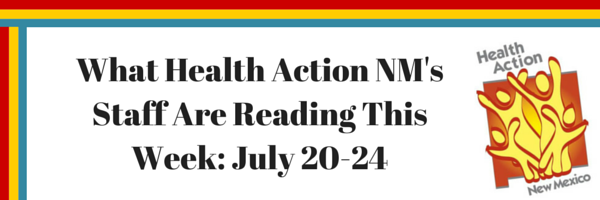
To improve health and save money we need to start thinking about policies that address the social determinants of health. The glaring irony of the American health care system is that we spend so much more than any other county on health care and have no substantially improved outcomes to show for it. That realization can boggle the mind, but it starts to make sense when you look at our approach to other public programs linked to health. The United States spends about half as much of our GDP on social services, such as nutritional assistance programs and supportive housing programs, than our European and Scandinavian counterparts. Studies consistently find that well-structured, basic social services can be incredible investments that pay themselves off in a variety of ways, one of which is reduced health costs. It’s time to get serious about investing in programs that simultaneously improve health and save money.
- Barbara Webber, Executive Director
It's unwise to impose Medicaid premiums and co-pays. Several states have asked the Department of Health and Human Services for permission to charge Medicaid beneficiaries premiums and co-pays to keep their coverage active. The report finds that even small payments are enough to deter people who are struggling to make it day-to-day from retaining coverage and seeking necessary medical care. When people are forced to reject one basic need to meet another, we can be certain of a negative outcome. Moreover, the proposed payment increases would be so small that they would barely affect the state’s budgets while adding a huge administrative burden on the state. We must maintain the integrity of public programs that improve people’s health.
- Joe Martinez, Outreach Coordinator
Medicaid expansion enrollees cost more than anticipated – but not for long. Initially, it was estimated that Medicaid beneficiaries would cost 1% less than those on traditional Medicaid but new data reveals that costs were 19% higher than those of traditional Medicaid. How could that be? It turns out that there was a lot of pent up demand for medical services that people couldn’t access without health coverage. The report indicates that costs are expected to fall substantially by 2016, once beneficiaries have met their basic health needs. It should be noted that all years of higher-than-expected spending will occur when the federal government pays for the full costs of expansion. The actuarial analysis found that there would be no effect on state budgets. The report also found that the cost of program as a whole is well under recent projections. Medicaid is living up to its promise of giving low-income people greater access to health care services and more control over their health.
- Colin Baillio, Communications and Outreach
Anthem and Cigna strike $54.2 billion deal. This is the largest buyout in the history of the health insurance industry. It raises worries among consumer health advocates because consolidation often leads to higher premiums – and for all the wrong reasons. As Sarah Kliff points out, mergers increase insurance carrier’s ability to negotiate lower prices with providers while also leading to higher premiums. The benefits of greater negotiating power ought to be passed on to consumers in the form of lower premiums and out-of-pocket costs, as they are in Medicare and Medicaid and single-payer health coverage systems. The government must now decide if the Anthem-Cigna merger violates antitrust laws. Consolidation in the health care system should be approved only if there is a guaranteed benefit for consumers.
- DeAnza Sapien, JD, State Advocacy Coordinator
Health Action
